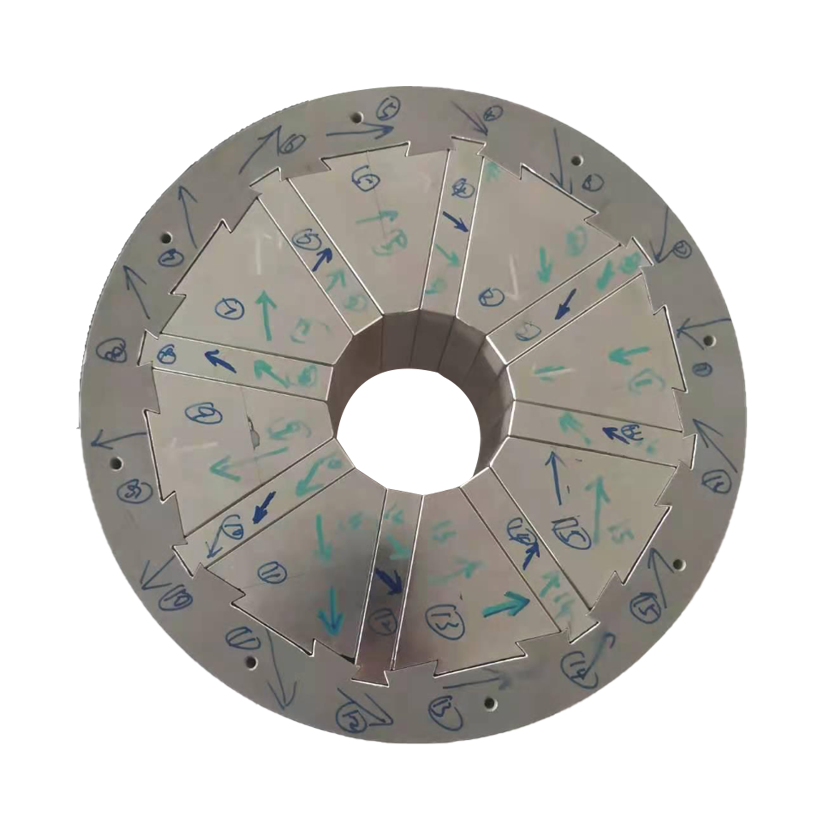A Halbach Array is a magnetic array that produces a high magnetic field utilizing permanent magnets, arranged with a spatially rotating magnetic field vector which has the effect of focusing and augmenting the magnetic field on one side, while cancelling it out on the other. Halbach Arrays are able to achieve very high and uniform flux densities without necessitating any power input or cooling, which an electromagnet would require.
A single magnet is shown at left, with the north pole facing up throughout. The field strength, indicated by the color scale, is equally strong on the top and bottom of the magnet. In contrast, the Halbach array shown at right has a very strong field on the top, and a fairly weak field on the bottom. The single magnet is shown here as 5 cubes like the Halbach array, but with all of the north poles pointing up. Magnetically, this is the same as a single long magnet.

The effect was initially discovered by John C. Mallinson in 1973, and these “one-sided flux” structures were initially described by him as a curiosity (IEEE paper link). In the 1980s, physicist Klaus Halbach independently invented the Halbach array to focus particle beams, electrons and lasers.
Many components of modern technology are powered by the Halbach array. For example, Halbach cylinders are magnetized cylinders capable of producing an intense but contained magnetic field. These cylinders are used in devices such as brushless motors, magnetic couplings, and high field particle focusing cylinders. Even simple refrigerator magnets use Halbach arrays—they’re strong on one side, but hardly stick at all on the opposite side. When you see a magnet with a magnetic field that is increased on one side and decreased on the other side, you are observing the Halbach array in action.
Honsen Magnetics has manufactured permanent magnet Halbach Arrays for industrial and technical applications for a long period. We specialize in the technical design, engineering and manufacturing of multi-segmented, circular and linear (planar) Halbach arrays and Halbach-type magnetic assemblies, providing multiple pole configurations with high-field concentrations and high-uniformity.




